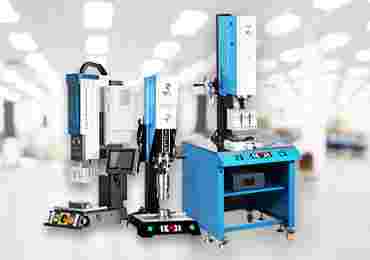Ultrasonic welding is a key process in manufacturing where precision and reliability matter. The heart of any ultrasonic welder is its generator, which converts electrical energy into high-frequency signals that power the welding process. Over the decades, generator technology has evolved significantly, moving from basic analog systems to advanced digital solutions. This evolution has shaped how manufacturers design, operate, and optimise ultrasonic welding machines.
From Analog to Digital: A Timeline of Change
In the early days, analog generators dominated the market. These systems were built with simple circuitry and relied on manual tuning to achieve resonance. While they were robust and relatively easy to maintain, analog generators lacked flexibility. Operators had to adjust frequency settings manually, often leading to inconsistencies in weld quality.
By the 1990s, hybrid systems started appearing. These combined analog hardware with early microprocessor controls. Manufacturers began to see the benefits of partial automation, including improved frequency tracking and better energy efficiency.
The real breakthrough came with digital generators. Powered by sophisticated microcontrollers and software algorithms, digital systems offered precise control over frequency, amplitude, and power output. Automatic frequency tracking became standard, reducing downtime and improving weld consistency. Manufacturers could now monitor plastic welding parameters in real time, paving the way for predictive maintenance and process optimisation.
Key Advantages of Digital Generators
The transition to digital technology wasn’t just a technical upgrade; it transformed the production environment. Some notable benefits include:
-
Real-Time Process Monitoring
Digital generators allow operators to track amplitude, power, and time during each weld cycle, ensuring consistent quality. -
Adaptive Frequency Control
Digital systems automatically adjust to changing conditions, such as variations in material density or horn wear. -
Data Integration
Advanced generators can connect with factory automation systems, enabling Industry 4.0 features like remote diagnostics and production analytics.
How Manufacturers Adapted Production Processes
The shift to digital generators required more than swapping hardware. Manufacturers rethought their entire approach to machine design and workflow integration.
1. Enhanced Machine Interfaces
Touchscreen HMIs replaced simple analog dials, making systems more intuitive. Operators gained access to detailed parameter settings, error logs, and graphical reports.
2. Quality Assurance Integration
Digital generators facilitated better quality control. Many production lines integrated automatic weld validation, reducing human error and waste.
3. Energy Efficiency Improvements
With precise control, energy consumption dropped significantly. Digital systems only deliver the exact power required for each weld, lowering operational costs.
4. Predictive Maintenance
Data from digital generators allowed predictive models to flag issues before failures occurred. This shift reduced unplanned downtime and improved equipment longevity.
Emerging Trends in Generator Technology
As manufacturing continues to embrace automation, next-generation generators are focusing on connectivity and intelligence:
-
IoT-Enabled Systems: Machines now support remote monitoring and cloud-based data storage.
-
AI-Powered Process Control: Algorithms predict optimal welding parameters for different materials.
-
Green Manufacturing Goals: Energy-efficient designs align with sustainability initiatives.
Why This Evolution Matters
The evolution of generator technology has a direct impact on production quality, operational efficiency, and overall cost. For manufacturers, keeping pace with these advancements is no longer optional—it’s a competitive necessity.
-
Digital technology improves repeatability in high-volume production.
-
Better data control supports compliance with industry standards.
-
Energy savings contribute to sustainability and cost reduction.




